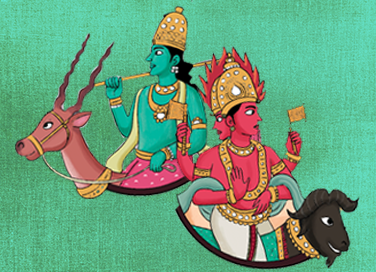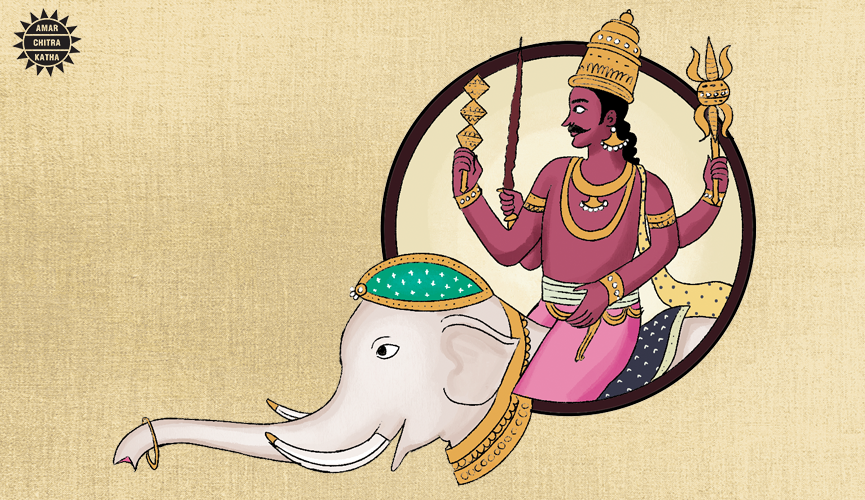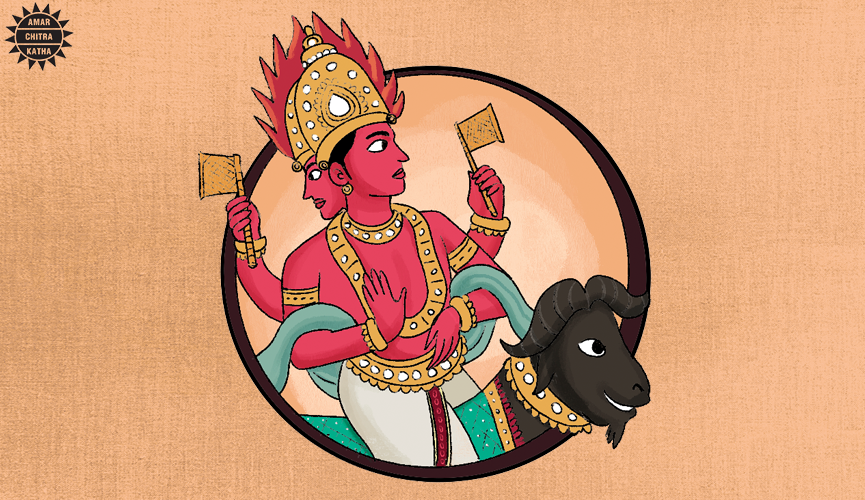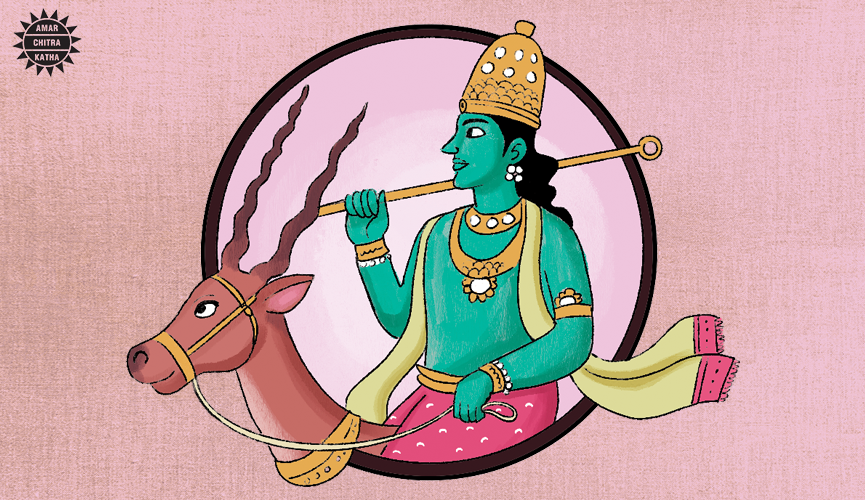The Vedic Gods
- April 4, 2023


The Vedic Gods
- April 4, 2023
By Malini Saigal
The earliest Hindu scriptures are the Vedas, which have hymns to many gods or devas, most of whom were linked to natural phenomena such as Indra (god of thunder and rain), Vayu (god of wind), Agni (god of fire), Surya (sun god), Chandra (moon god), and so on. These gods were also the Dikpalas or guardians of the eight directions.

Indra is the king of the Vedic gods. He carries a thunderbolt and brings rain or life to the world. He rides on Airavata, the white elephant, and presides over a sumptuous court in Indralok, with beautiful apsaras in attendance. He is also the guardian of the eastern direction and the husband of the beautiful Shachi or Indrani.
To receive more such stories in your Inbox & WhatsApp, Please share your Email and Mobile number.

Agni is the god of fire. He is associated with the domestic cooking fire and also with the fire lit at yagnas. So, his is often shown with two flames around his crown. He is the one who carries all the offerings to the various gods (as the offerings are given into the fire). Agni rides a ram and is also the lord of the southeast direction. In later times, he also becomes the foster father to Kartikeya, the son of Shiva.

Vayu is the Vedic god of wind. He is also the lord of prana or breath. His is the guardian of the northwest direction.
Read more about the stories of these Vedic gods on the ACK Comics app!
To receive more such stories in your Inbox & WhatsApp, Please share your Email and Mobile number.

Comic of The Month
The Naval Journey of India Book I
This book is the first of a three-book series that takes a deep and detailed look at India's Naval History and a deep insight into the lives of our men and women in white. But any series on the Indian Navy has to start at the very beginning - exploring India's celebrated maritime history. Join our little hero, Bharat, and his grandfather, Commodore Sagar, as they sail into the deep blue waters of time. Book I of The Naval Journey of India takes a sweeping look at India's maritime endeavours, how the seas impacted us over millennia and how the oceans made us who we are.